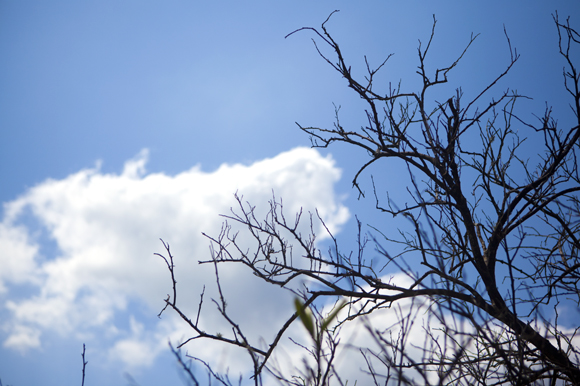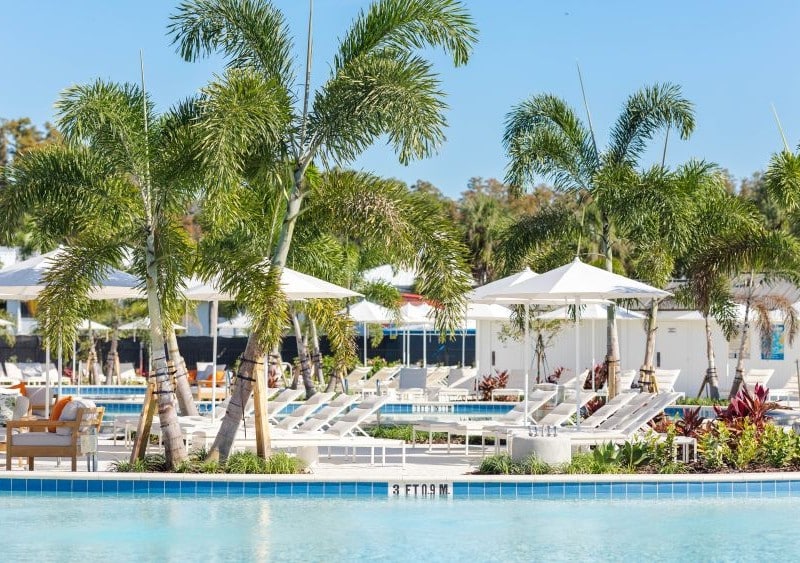Florida Citrus: Scientists Confront Unprecedented Challenge In Greening
The clock is ticking as an insidious microbe lays waste to Florida's citrus groves, making the entire peninsula an experimental field trial for strategies that researchers hope will fend off the extinction of a crop that contributes billions of dollars and more than 75,000 jobs to the state's economy.
Once upon a time, some 500 years ago, Juan Ponce de Leon planted the first orange trees in the sandy loam near St. Augustine — or so the legend goes. Though he may have failed in his fabled quest to discover the Fountain of Youth, the Spanish conquistador managed to plant the seeds of what was to become a $9 billion industry that put Florida on the New World map.
Now a tiny Old World bug that transmits a primitive microbe is laying waste to thousands of acres of groves throughout Florida and for the first time in its history, there are whispers this is a threat King Citrus may not survive. To those who would contemplate a Florida that is not synonymous with orange juice, Mike Sparks firmly disagrees.
“If history has anything to say, we’ll whip this,” says Sparks, CEO of Florida Citrus Mutual.
Others aren’t so sure; but on one thing all agree: Time is running out as researchers race the clock to save one of the state’s oldest and most important industries from a scourge known as citrus greening.
The Art Of Science
Growers like to say that cultivating citrus is both an art and a science — but it is science that has rescued the industry time and again when freezes, hurricanes, disease and even development drove it to its knees.
For nearly two centuries, from its beginnings as Florida’s premiere cash crop, growers have put their fate and their faith in the hands of researchers who developed sturdier plants, cold-hardy varieties and chemical and biological remedies for a perpetual onslaught of pathogens and pests.
Science helped conquer canker, tristeza and even the dreaded Medfly, where the discovery of a single pregnant female is enough to precipitate an agricultural emergency of global proportions.
But science is a very slow and deliberate process and the speed with which greening has taken hold in a relentless march northward from the single infected tree discovered in Homestead in the summer of 2005, is unprecedented in its scope and complexity.
The disease now resides in every Florida county that has commercial citrus groves, including much of the Tampa Bay region.
For all practical purposes, the entire peninsula has become an experimental field trial for strategies that scientists hope will fend off the extinction of a crop that contributes more than 75,000 jobs to the state’s economy.
Small World, Huge Consequences
The Asian citrus psyllid, the sap-sucking critter that transmits the bacterial disease huanglongbing (HLB), more commonly known as citrus greening, arrived in Florida with the new millennium. It likely hitched a ride from Asia on a cargo ship transporting potted plants, or in a suitcase containing a traveler’s foreign foliage.
The bug, itself, does very little damage to citrus plants or fruit. It is only when the psyllid teams up with the HLB-causing bacteria that industry panic ensues. So the psyllid’s initial appearance failed to set off alarm bells within the industry, which was then focused on what seemed a more ominous and immediate concern — the citrus tristeza virus spreading across Florida, a state that produces two-thirds of the nation’s citrus and is second only to Brazil in processing the world’s orange juice.
At the time, researchers at the University of Florida in Gainesville had just completed a global assessment of more than a dozen diseases that could pose a threat to Florida’s citrus industry, analyzing the likelihood of any of them becoming established in the Sunshine State, and the potential damage they might inflict if they did.
“We came to the conclusion pretty readily that HLB was the worst of all the diseases we looked at,” says Harold Browning, who is leading the scientific charge to save citrus from the greening disease. “There were no available strategies to readily stop it, and it affects all varieties, all rootstocks.”
By the time the first HLB-infected tree was discovered in South Florida, the psyllid vector already was so widespread, there was no attempt to control or eradicate it.
“Had we anticipated the pathogen would show up soon after the psyllid, the target probably would have been slowing the spread, which is what they’re doing now in California — trying to keep (the psyllid) from spreading from the L.A. basin,” Browning says.
Will Arizona Be Next?
California, second only to Florida in U.S. citrus production, has been dealing with the psyllid for nearly two years. It first showed up in urban areas of Los Angeles, where a single HLB-infected tree has been found to date. State and federal agriculture officials are trying to keep the west coast genie in the bottle — and out of commercial groves in the California citrus belt — through vigorous inspections and quarantines.
The disease is even more established in the Rio Grande Valley of Texas, which is tied with Arizona for third place in citrus production. The psyllid has made its way to Arizona, as well, but the devastating disease it can transmit has not been found there — yet.
“A big part of what we’re learning hopefully will help those industries as well,” said Browning, who serves as executive director of the Citrus Research and Development Foundation, established in 2009 to manage the massive research effort under way on behalf of Florida citrus. About 95 percent of the foundation’s efforts are directed at rescuing the industry from greening. The rest goes to canker, citrus black spot and other diseases.
Growers have pumped some $60 million of their own money — citrus tax dollars that normally would have been directed toward global promotion and marketing efforts — into the HLB research effort.
“If we don’t beat this disease, marketing is going to be a moot point,” said Andrew Meadows, director of communications for Florida Citrus Mutual.
The question, says Browning, is not if science will provide a remedy for greening, but whether it will beat it in time to save the industry.
Jan Hollingsworth is a Valrico-based freelance writer who has reported on agriculture for two decades; the Florida Farm Bureau named her agricultural writer of the year in 2007. Comments? Contact 83 Degrees.















